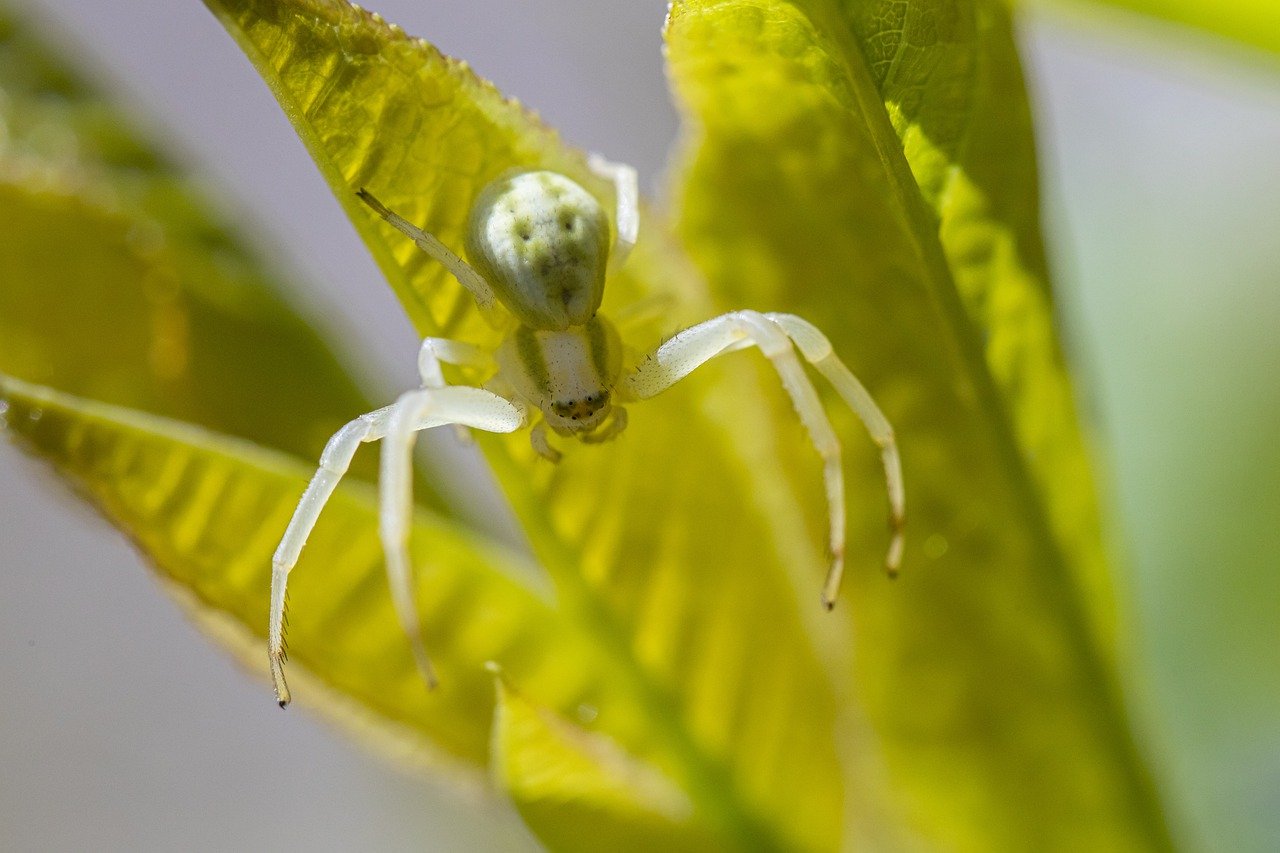The Goldenrod Crab Spider (Misumena vatia) is a fascinating species of crab spider belonging to the family Thomisidae. Known for its remarkable ability to change color to blend in with its surroundings, this spider is an ambush predator commonly found on flowers. Its unique hunting strategy and striking appearance make it a remarkable member of the spider world.
Physical Description:
- Size:
- Females: Larger, with a body length of 6–10 mm.
- Males: Smaller, around 3–5 mm.
- Coloration:
- Can be bright yellow, white, or a mix, depending on the flower they inhabit (e.g., goldenrod, daisies).
- Females may have red stripes along the sides of their abdomen.
- Males are smaller and more subdued in color, often brown or greenish-yellow.
- Body Shape:
- Flat, wide body resembling a crab, with long, robust front legs adapted for grabbing prey.
- Rear legs are shorter, giving it a crab-like appearance.
Behavior:
- Hunting Strategy:
- The spider is an ambush predator, relying on camouflage to remain unseen by prey.
- It waits on flowers, using its powerful front legs to catch pollinators like bees, butterflies, and flies.
- Camouflage:
- Can change its body color from white to yellow and vice versa, depending on the flower it occupies. This process takes several days.
- Movement:
- Does not spin webs for hunting but uses silk to anchor itself or as a safety line.
Habitat:
- Found in a variety of temperate habitats, particularly in areas rich in flowering plants:
- Meadows and grasslands.
- Garden beds with flowering shrubs.
- Forest edges and clearings.
- Often seen on yellow or white flowers such as goldenrod (Solidago), daisies, or yarrow.
Distribution:
- Native to North America, Europe, and parts of Asia.
- Found in temperate regions, where flowers are abundant during spring and summer.
Life Cycle:
- Eggs:
- Laid in a silk sac, often hidden under leaves.
- The female guards the sac until the spiderlings hatch.
- Spiderlings:
- Hatch as tiny, independent spiders.
- Disperse by “ballooning,” using silk to catch the wind and travel to new locations.
- Adult:
- Matures in spring or summer, with females living longer than males.
Diet:
- Prey:
- Pollinators like bees, butterflies, hoverflies, and other insects visiting flowers.
- Larger prey is subdued using strong front legs and venom.
Defense Mechanisms:
- Camouflage:
- Blends seamlessly with the flower it occupies, avoiding detection by both predators and prey.
- Venom:
- Subdues prey quickly, though harmless to humans.
Ecological Role:
- Predation Control: Helps regulate populations of pollinators and other insects.
- Ecosystem Balance: Plays a crucial role in the food web as both predator and prey.
Conservation Status:
- The species is considered Least Concern, with stable populations in its native range.
Interesting Facts:
- Color-Changing Ability: The spider’s ability to shift between yellow and white depends on environmental cues, particularly flower color. This process is regulated by pigments in the spider’s cuticle.
- Ambush Expertise: Despite its stationary hunting style, it effectively catches fast-moving insects like bees.
- Crab-Like Movements: Its sideways walking resembles that of a crab, giving it its common name.
Summary:
The Goldenrod Crab Spider (Misumena vatia) is a master of disguise and an efficient ambush predator that exemplifies nature’s ingenuity. With its color-changing abilities and ecological importance, it plays a fascinating role in the balance of pollinator-rich ecosystems. Its presence on flowers highlights the interconnectedness of plants, pollinators, and predators in the natural world.
Views: 1107
Subscribe to the newsletter:
